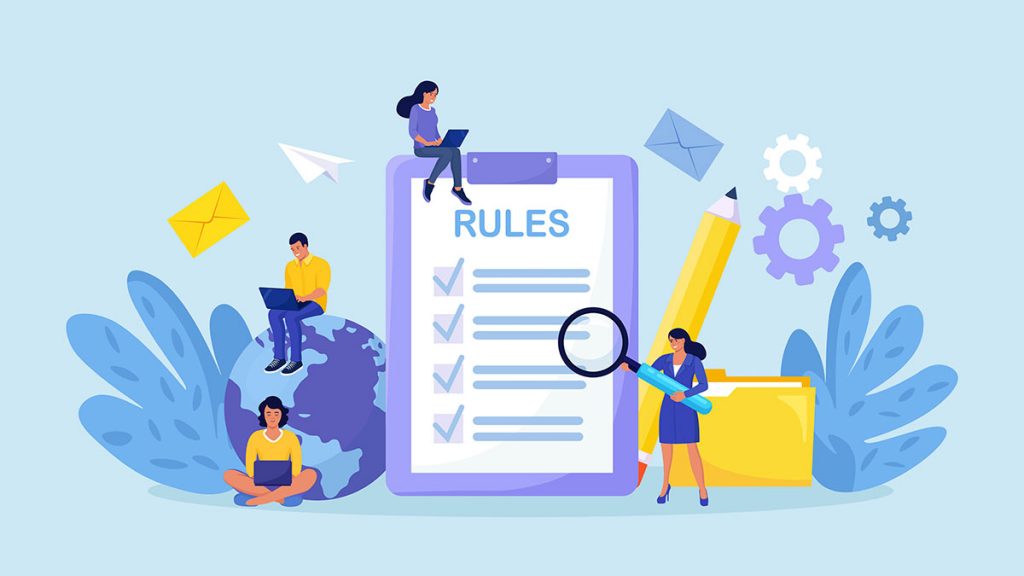High-quality content is among the most valuable business assets. There’s no way to thrive in today’s digital world without it.
Like everything of value, good content takes time and effort. If you’re creating it by yourself, you’ll inevitably reach a limit. There are only so many hours in a day, and as a business owner, you have to think about a whole lot of things on top of content creation.
There doesn’t have to be a trade-off between content and other important business aspects. You can scale your content efforts and boost your presence while still leaving ample time for other responsibilities.
If you’re not sure where to start, here are the steps that you should follow:
1. Structure Your Content Creation Process
In the grand scheme of content marketing, writing content might seem like a singular step in the process. However, you need to think of it as an elaborate process of its own and break it down into its main components.
Generally speaking, the creation process will look something like this:
- Selecting the right format
- Keyword research
- Outline creation
- Writing
- Editing
- Visuals
- Quality check
- Publishing
But it doesn’t stop there. To really make sure your strategy is working, you need to track your content’s performance and identify areas of improvement.
You might feel compelled to cover the whole process yourself. In fact, you’re likely to do exactly that during the early stages of your business. At some point, you’re likely to realize that this approach isn’t very scalable.
When you break down the content creation process, you can see which parts you’d like to focus on yourself and which you could delegate. As you go about it, the key is to choose the right people for each job (more on that later).

2. Develop a Content Calendar
What will you publish by the end of the month?
What about three months from now?
If it takes you more than a few clicks to answer this question, it’s time to create a content calendar. And no, a mental calendar doesn’t count. There’s likely too much going on in your head as it is, so a calendar is better placed on an actual sheet.
At the very least, you should list out your content ideas with target publication dates. You can decide how much more elaborate you want the calendar to be. You can include resources, notes, outlines, and all other details you want to have in one place. Among them, don’t forget one of the key aspects that many people overlook:
The purpose of your content.
For a content piece to work, it must target a specific audience and be tailored to them. You need to understand what your content is supposed to do and where it belongs in your marketing funnel. To get the most out of each piece, make sure to cover every stage of the buying journey.
With the content process broken down and a content calendar, you’re ready to get started.
Or are you…?
![]()
3. Create a Comprehensive Style Guide
The importance of a well-developed style guide can’t be stressed enough. The last thing you want to do with content creation is wing it. You’ll create a lot of mess for yourself and others, and you’re very likely to confuse your audience with inconsistent content.
How so?
Scaling content creation involves more and more people over time. Each of them is likely to have their own style and ideas as to what the content should look like. As a result, your content might end up going in many different directions.
The best way to prevent this is by creating a style guide for everyone to follow. It should include the key aspects of your content:
- Overall format and structure
- Language
- Tone of voice
- Target audience
- SEO guidelines
You should have the guide ready before you start delegating content processes. Send them to everyone involved to make sure they’re on the same page. That way, you can scale your content creation process without worrying about inconsistencies.

4. Delegate and Follow the Plan
After you’re done with the preparation stage, it’s time to start scaling!
How?
By putting the right people in the right places. If your business is young and can’t afford to have a dedicated expert for every part of the process, it’s okay. You can merge some of them together until you grow further.
For instance, a good content writer can do keyword research, outline creation, and actual writing. An editor can edit the content and perform quality checks. All that matters is that you go with talented, experienced people instead of delegating to just anyone to cut costs. In the long run, this is never a good idea.
Alternatively, you can outsource the entire content creation process to a good content agency. According to research by the Content Marketing Institute, 55% of B2C businesses completely outsource content marketing.
If you decide to do the same, choose an agency that has experience in your field and will understand your market, audience, and goals. By finding the right partner, you can take your content to the next level in no time.

5. Repurpose and Atomize Your Content
Content repurposing and atomization are crucial to successful scaling. Both practices help you streamline content creation and come up with new content ideas more easily.
By repurposing your content, you can use one piece to create different forms of content for various platforms. By atomizing, you can recycle and extrapolate ideas behind successful content pieces, thereby increasing the chances of your future content succeeding as well.
Instead of always coming up with new content ideas, you can draw from what you already have through repurposing and atomization. As a result, the overall content creation process can be much smoother.

Scale Your Content, Scale Your Business
Scaling content creation is by no means an easy feat. You’re likely to realize that the above steps are easier said than done. However, you shouldn’t let that discourage you from scaling. Solid content offers way too many benefits to fall down your list of priorities.
Once you create a system for scaling your content, you’ll have a well-oiled machine that will fuel your business’ growth. As the importance of content marketing will only grow, this is a fantastic way to future-proof your business and take it to great heights.
